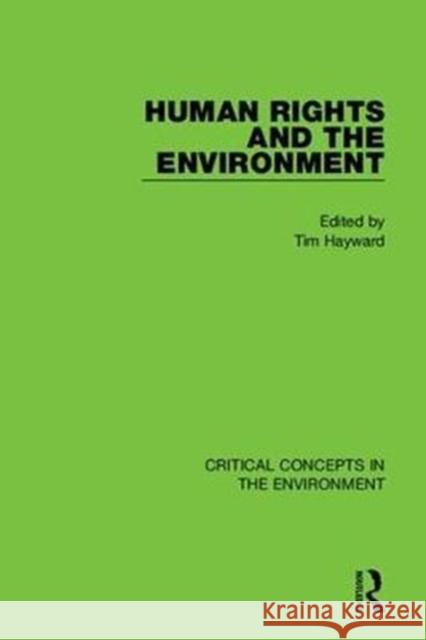Human Rights and the Environment » książka
Human Rights and the Environment
ISBN-13: 9780415530743 / Angielski / Twarda / 2017 / 1590 str.
The notion of 'human rights' is perhaps the most weighty and widely recognized ethical category of our time, while environmental threats are among the greatest challenges currently facing civilization. It is unsurprising therefore that questions about and around the connection between human rights and the environment abound. Can harms inflicted by the activities of some humans on others through the medium of the natural environment amount to a violation of the latter's rights? Do human beings have a right to an adequate environment? If so, is this 'right' already protected by existing, well-established rights--such as the right to life, or to health, for instance? Or do we need to recognize more specific environmental human rights? Anyway, is the language of human rights--and are the institutions that purport to guarantee them--ill-suited to the pursuit of environmental protection? If not, what can we learn from steps already taken in law and politics to link the aims of human rights and environmental protection? Interest in these and other questions has developed at a dizzying pace over the past two decades. Indeed, serious thinking about environmental rights is now a vibrant and dynamic area of study and research, and the sheer scale of the growth in its output makes this collection especially timely. Moreover, the highest quality work in the field has emanated from a wide range of different academic disciplines and perspectives, and has been published in a variety of largely specialist journals. Drawing on these and other sources, Tim Hayward has brought together in four volumes canonical and cutting-edge work to produce an indispensable one-stop 'mini library'. Human Rights and the Environment is fully indexed and includes a comprehensive and accessible introduction, newly written by the editor, which places the collected materials in their historical and intellectual context. It is an essential reference collection and is certain to be valued by scholars and students--as well as by serious policy-makers and practitioners--as a vital research and pedagogic resource.











